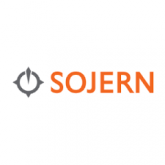 At Sojern we have access to real-time traveller audiences and unmatched visibility into global travel demand, we’re in a unique position to share the current travel trends at the forefront of marketers’ minds. In this we will take a look at the data in Middle East in order to aid travel marketers in their assessment of this worldwide event. They can use these trends to inform their marketing strategies during this period, as the industry stabilises. These insights are based on data collected on the November 10, 2020. We are reviewing our data on a regular basis in order to provide an accurate view of trends and patterns in consumer behaviour. Sojern’s insights are based on over 350 million traveller profiles and billions of travel intent signals, however it does not capture one hundred percent of the travel market.
At Sojern we have access to real-time traveller audiences and unmatched visibility into global travel demand, we’re in a unique position to share the current travel trends at the forefront of marketers’ minds. In this we will take a look at the data in Middle East in order to aid travel marketers in their assessment of this worldwide event. They can use these trends to inform their marketing strategies during this period, as the industry stabilises. These insights are based on data collected on the November 10, 2020. We are reviewing our data on a regular basis in order to provide an accurate view of trends and patterns in consumer behaviour. Sojern’s insights are based on over 350 million traveller profiles and billions of travel intent signals, however it does not capture one hundred percent of the travel market.
United Arab Emirates (UAE) residents from specific countries, and tourists entering Dubai, are required to present negative COVID‑19 Polymerase Chain Reaction (PCR) tests prior to their flight, or on arrival in the country. The uncertainty around travel, and the ever-changing restrictions as a result of the pandemic, continue to have a negative impact on the economy across the region. For instance, in the second quarter of 2020 the Saudi economy shrank by 7% and unemployment rose to 15.4%. It has been suggested that the Dubai economy may take until 2023 to recover to 2019 levels. In order to combat these negative figures Dubai has introduced a one-year remote working visa for tourists, and Bahrain plans to extend visit visas for free until January 2021.
 Tourism Breaking News
Tourism Breaking News


